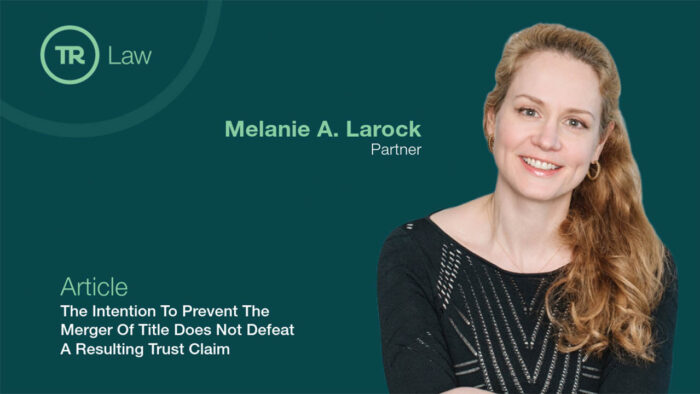CATASTROPHIC IMPAIRMENTS BY VIRTUE OF MENTAL AND BEHAVIOURAL DISORDERS
Author(s): Michael L. Bennett*
November 12, 2014
There is no more difficult patient or client to assist than those who suffer from mental and behavioural disorders. I am sure all lawyers and clinicians who are regular readers of the Accident Benefits Reporter have, or are currently dealing with, clients and patients who suffer physical injuries but their recovery is complicated due to psychological or psychiatric issues. It is also very common to see survivors of motor vehicle accidents succumb to anxiety, depression and outright despondence once the reality that some impairment will be permanent becomes obvious.
Helping clients and patients who suffer from accident related mental and behavioural disorders is difficult. Insurance companies find these injuries difficult to deal with because they do not fit neatly into their preconceived notions regarding the trajectory of a normal recovery. Lawyers, clinicians and insurers alike would all like to see survivors follow a straight line towards total recovery. However, once in a while, a survivors’ recovery is complicated by a mental or behavioural impairment resulting in his or her condition actually getting worse, not better.
Proving a survivor has suffered a catastrophic impairment by virtue of mental and behavioural disorder is usually an uphill battle. While to the lawyer or clinician it may seem obvious the mental and behavioural disorder was caused by a motor vehicle accident, insurers are often slow to agree. It is not uncommon for insurers to take a hard look at the survivor’s pre-accident medical history and draw inferences from vague and dated medical records, suggesting that the mental and behavioural disorder pre-existed the relevant motor vehicle accident. Similarly, the credibility or truthfulness of the survivor is often brought into question. Questions of primary or secondary gain of the survivor often come to the forefront. Insurer evaluations often reach vague conclusions regarding “poor effort” on psychological and psychiatric testing and conclude that the survivor is not telling the whole truth. As a result, the application process may serve to exacerbate and entrench the mental and behavioural disorder. Lack of funding for further treatment and financial pressures may also worsen matters.
When faced with a survivor as I described above, it is important to remain level headed and clinical when attempting to prove the survivor has suffered a catastrophic impairment. At this point, it is important for the lawyer to arrange appropriate assessments to accurately determine whether the survivor is suffering a catastrophic impairment by virtue of a mental and behavioural disorder. Failing to arrange the appropriate assessments required, in some cases, can prove to be fatal.
The first step is to find an appropriate treatment provider or assessor to complete the Application for Catastrophic Impairment (OCF-19). This form must be completed by a physician as it is assumed that there is more to the injury than “brain impairment only”. Mental and behavioural impairment caused solely as a result of a brain impairment is outside the scope of this article. Generally, because there is usually a long gestation period for a mental and behavioural disorder, one should normally wait two years before making the application for catastrophic impairment under this criteria.
In terms of the assessment itself, whether conducting it for the first time or for the hundredth time, the assessor should read through Chapter 14 of the AMA Guides, 4th Edition, as a starting point. The evaluator should follow the basic steps set out in Chapter 14 which explains how to conduct an appropriate assessment. If the assessor does not follow the instructions set out in Chapter 14 of the AMA Guides, that assessor’s opinion will not be accepted by an Arbitrator.
In the seminal decision of Pastore v Aviva Canada Inc. (2012), 112 O.R. (3d) 523, the Ontario Court of Appeal set out the necessary steps that an assessor must take before he or she may conclude that a person has suffered a catastrophic impairment by virtue of a mental and behavioural disorder. It involves a three-step approach. First, there must be a diagnosis of a mental and behavioural disorder. Second, the assessor must identify the impact of the disorder on a person’s daily life. Third, there must be an assessment of the severity of those limitations in relation to the four spheres of functioning set out in Chapter 14.
With respect to the diagnosis of mental and behavioural disorders, Chapter 14 states that the clinician must use the DSM-III-TR. Currently, most clinicians use the DSM-IV-TR to arrive at a diagnosis notwithstanding the fact that recently, the DSM-V is now in circulation. Whatever version of the DSM is used, there must be an actual formulation of a diagnosis of a mental and behavioural disorder based on whatever DSM edition is chosen.
Second, the assessor must consider the impact of the mental and behavioural disorder (if one is found) on that person’s actual daily life. During this stage of the assessment, the clinician must consider how the mental and behavioural disorder affects the four spheres of a person’s daily life, which are well described in Chapter 14. These four spheres are as follows:
- Limitations on activities of daily living;
- Social functioning;
- Concentration, persistence and pace and
- Deterioration or decompensation in the work or work-like settings.
In the written report, the assessor is asked to provide examples of how the identified mental and behavioural disorder is affecting the survivor within each identified sphere.
The final step is to provide an opinion on the “severity” of the limitations that were found in the four spheres. At this point, the assessor should turn to page 301 of the AMA Guides 4th Edition and consider the table entitled “Classification of Impairments due to Mental and Behavioural Disorders”. In this table, there are five classes of impairments starting with Class 1 (No Impairment) to Class 5 (Extreme Impairment). According to the Court of Appeal in the Pastore decision, if an assessor finds that the survivor has suffered a Class 4 or Class 5 impairment in any one of the four spheres, then, that survivor is to be deemed catastrophically impaired.
One of the most difficult aspects of rating this severity is deciding whether a person is suffering from a Class 3 (Moderate Impairment) as opposed to a Class 4 (Marked Impairment). There is no explanation in the AMA Guides 4th Edition as to the qualitative difference between these two categories. A Class 3 Impairment is described as “impairment levels are compatible with some, but not all, useful functioning”. A Class 4 impairment is described as “impairment levels significantly impede useful functioning”. Because of the need to exercise clinical judgment in the survivor’s real world, it is essential that a multi-faceted approach to the assessment be adopted. Arbitrators at the Financial Services Commission of Ontario (including Appeal decisions to the Director’s Delegate) have indicated a single assessment in a doctor’s office is simply not enough.
In the decision M.G. v The Economical Mutual Insurance Company (FSCO A09-002443) November 23, 2012 (2) Arbitrator Feldman revisited the guidelines used by the CAT DAC’s of yesteryear to determine what an appropriate mental and behavioural CAT assessment ought to look like. Based on the old CAT DAC guidelines, it is necessary for the assessor to consider each sphere set out in Chapter 14 of the AMA Guides separately and to comment on each sphere. Arbitrator Feldman also noted that, in most cases, it is necessary to have a psychiatrist, psychologist and occupational therapist work together before drawing any final conclusions.
Recently, Arbitrator Feldman’s approach in the M.G. case, was accepted by Director Delegate David Evans in the Allstate Insurance Company of Canada and T.S. (FSCO Appeal P11-00032) September 25, 2014. In this decision, the survivor T.S. adduced evidence at her Arbitration from her treating family doctor, psychiatrist and psychologist regarding catastrophic impairment by virtue of a mental and behavioural disorder. At the Arbitration, these witnesses gave very general opinions on the issue whether T.S. was suffering from a marked impairment due to a mental and behavioural disorder, but the Arbitrator ruled in her favour. Sadly, because these treating professionals failed to follow the three step approach described in Pastore and the M.G. decision, the survivor lost on Appeal due to insufficient evidence of catastrophic impairment.
Since Pastore, it has become even more important to take a methodical approach to one’s assessment of a survivor suffering from a mental and behavioural disorder. Before Pastore, most assessors were providing a more general overall opinion regarding the severity of the survivor’s mental and behavioural impairment. Now an assessor needs to dig into the nitty gritty of the survivor’s life and explain why the assessor has reached his or her conclusion with respect to the severity of the impairment (i.e. moderate impairment vs marked impairment) in each of the four spheres being evaluated. Therefore, in order to complete such an evaluation, an in-home assessment with an occupational therapist is likely required. Naturally a psychiatrist and a psychologist ought to be involved in such an assessment as well.
Finally, the psychiatrist, psychologist and occupational therapist should all work together to reach a consensus on how these impairments are affecting the four spheres of activity along with a severity rating.
If all these steps are taken by the assessor involved in the Application for Catastrophic Impairment, the odds that an insurer will agree that the survivor has suffered a catastrophic impairment are greatly increased. At a minimum, reports that comply with what the Court and Arbitrators demand will have an influential effect on the assessors appointed by the insurer who will conduct their own assessment.
As far as proving catastrophic impairment at trial or arbitration, without reports from the involved assessors using the proper methodology, it is next to impossible for a survivor to prove his or her case.
View PDF version: Accident Benefit Reporter | Vol 15, Issue 2 | November 2014
Share this








